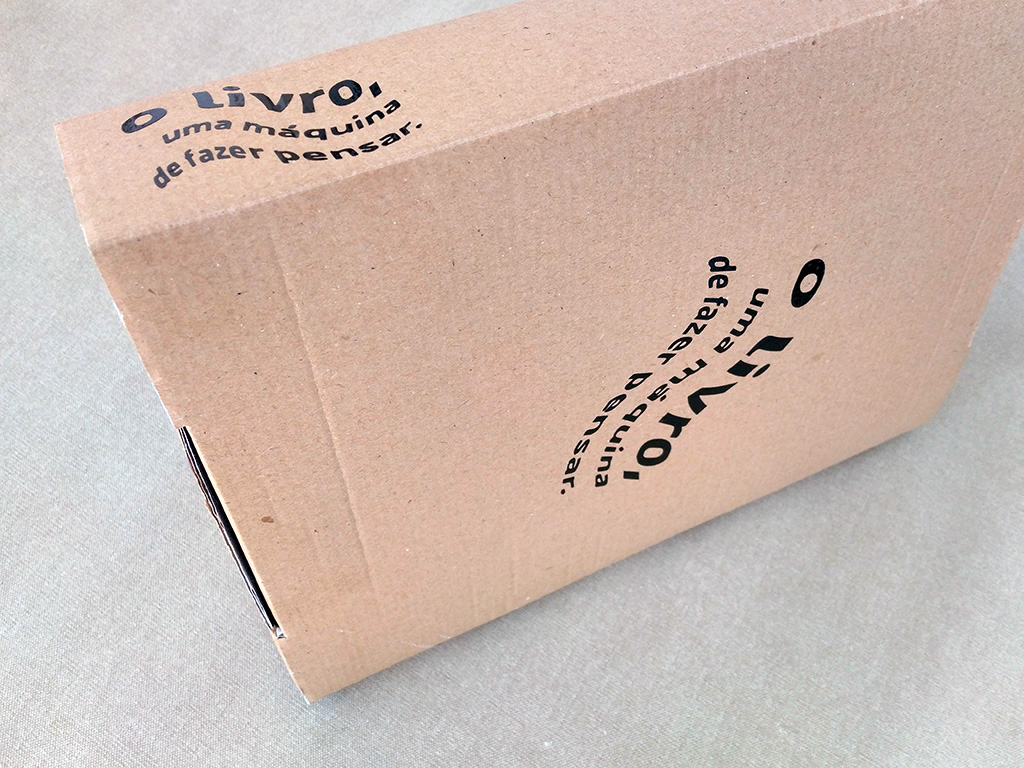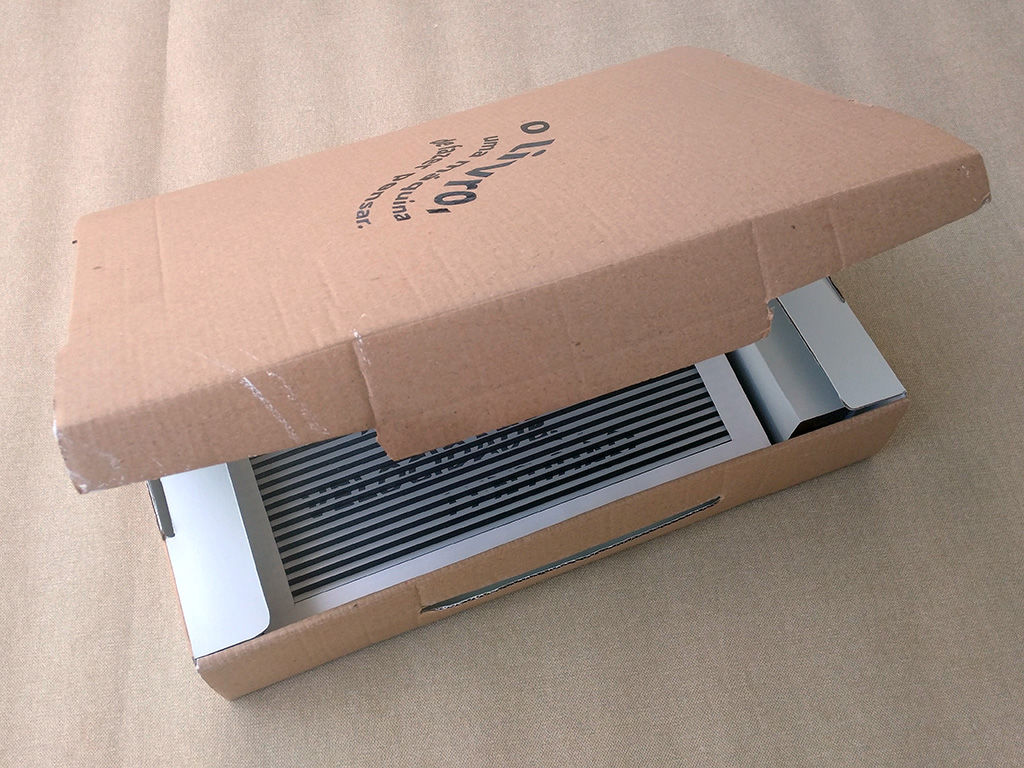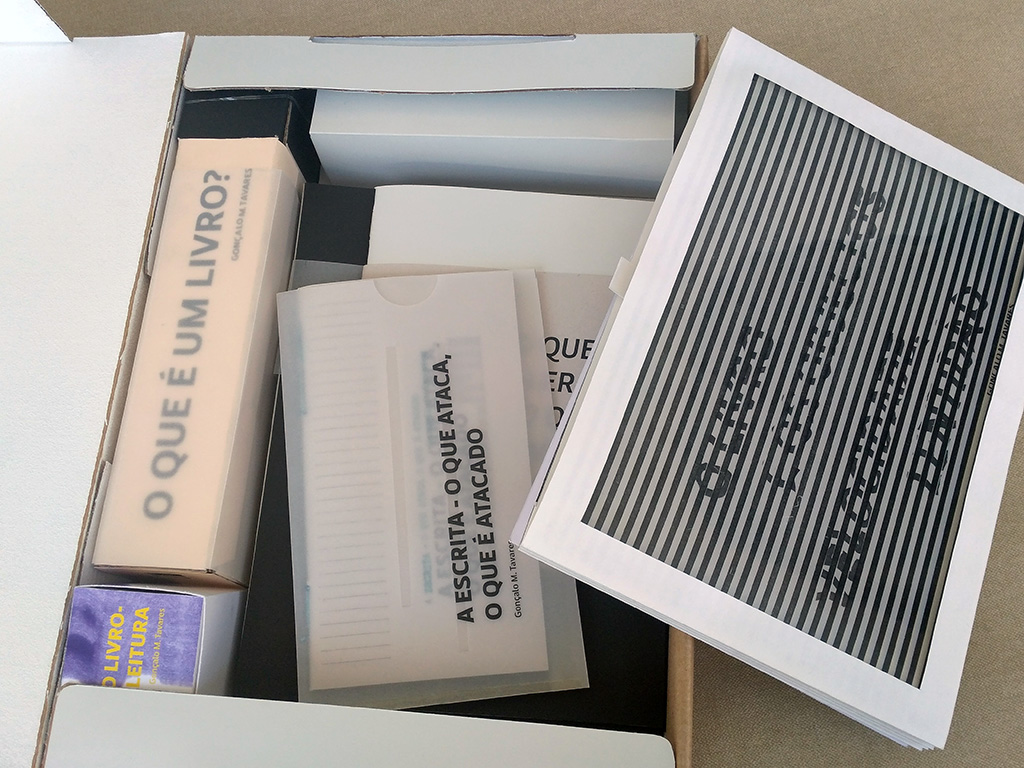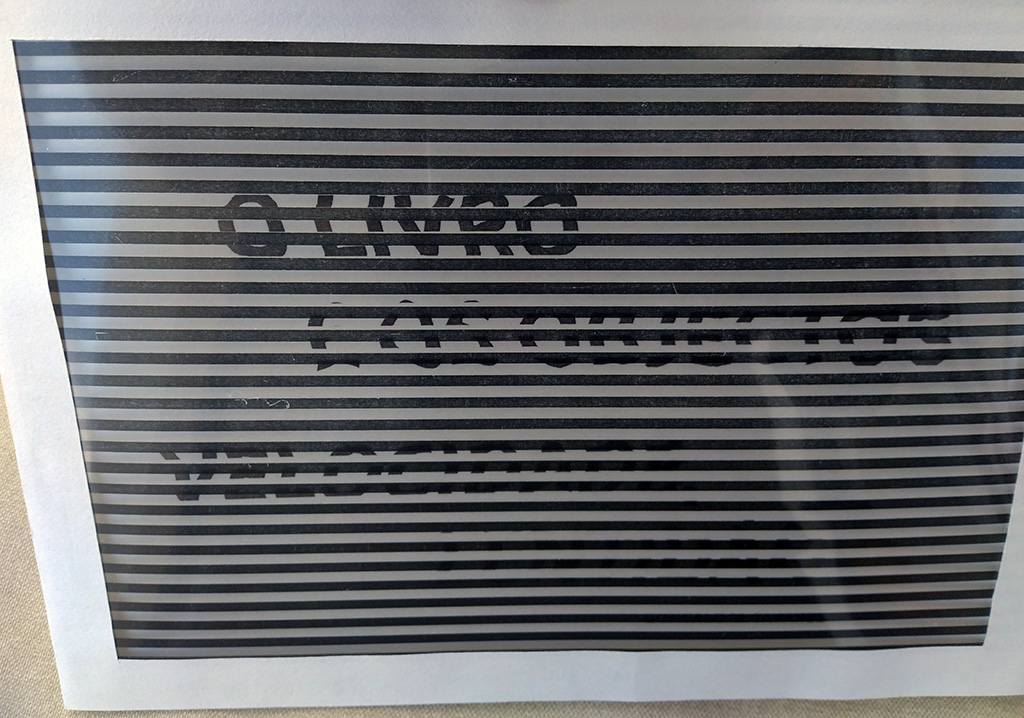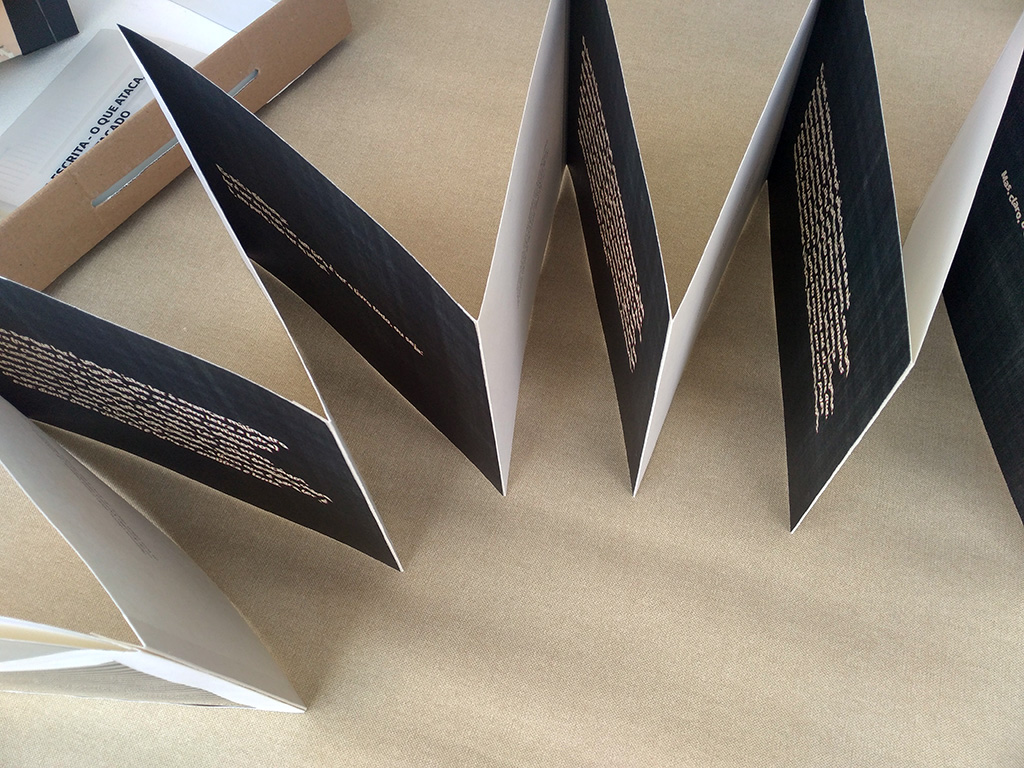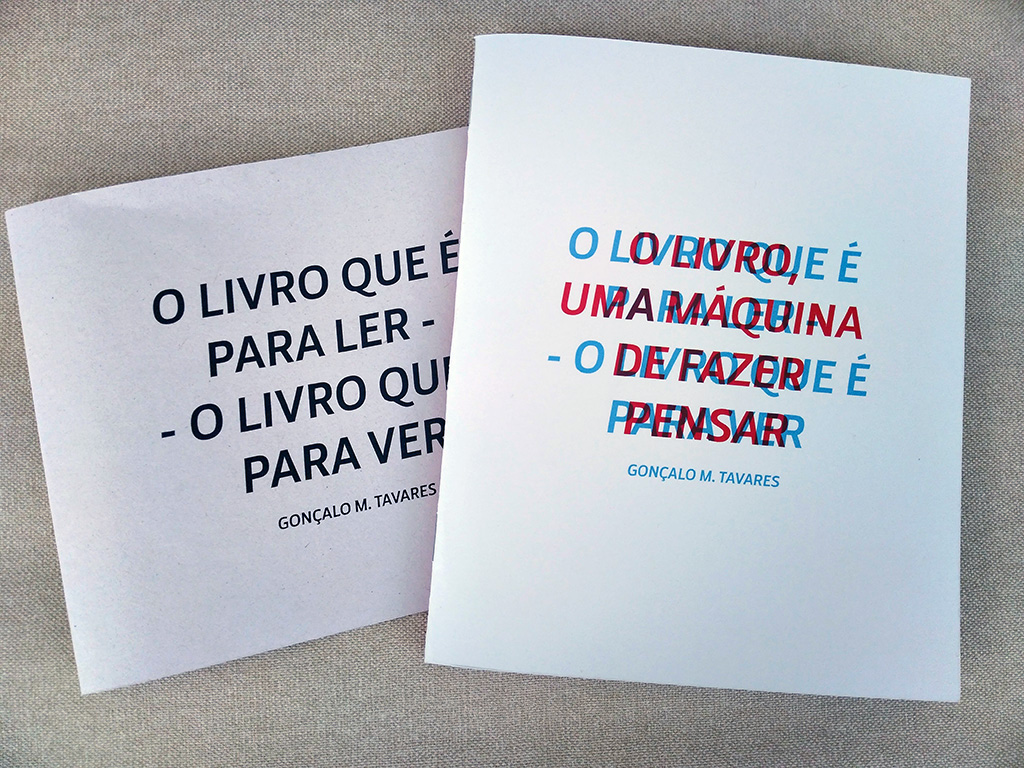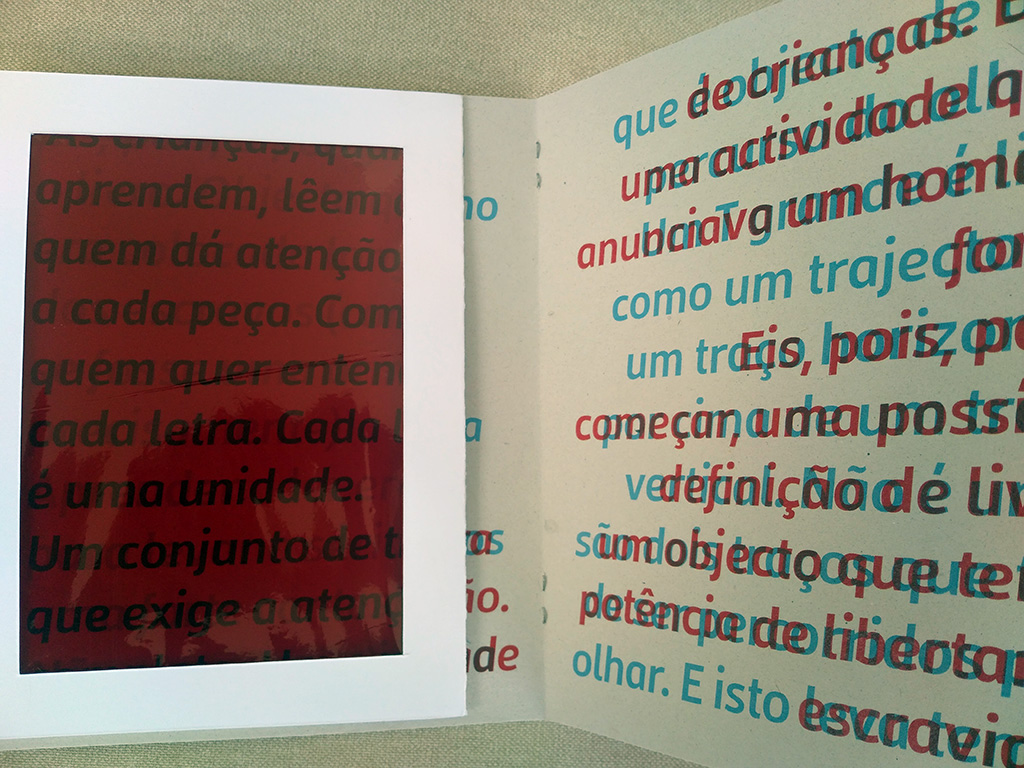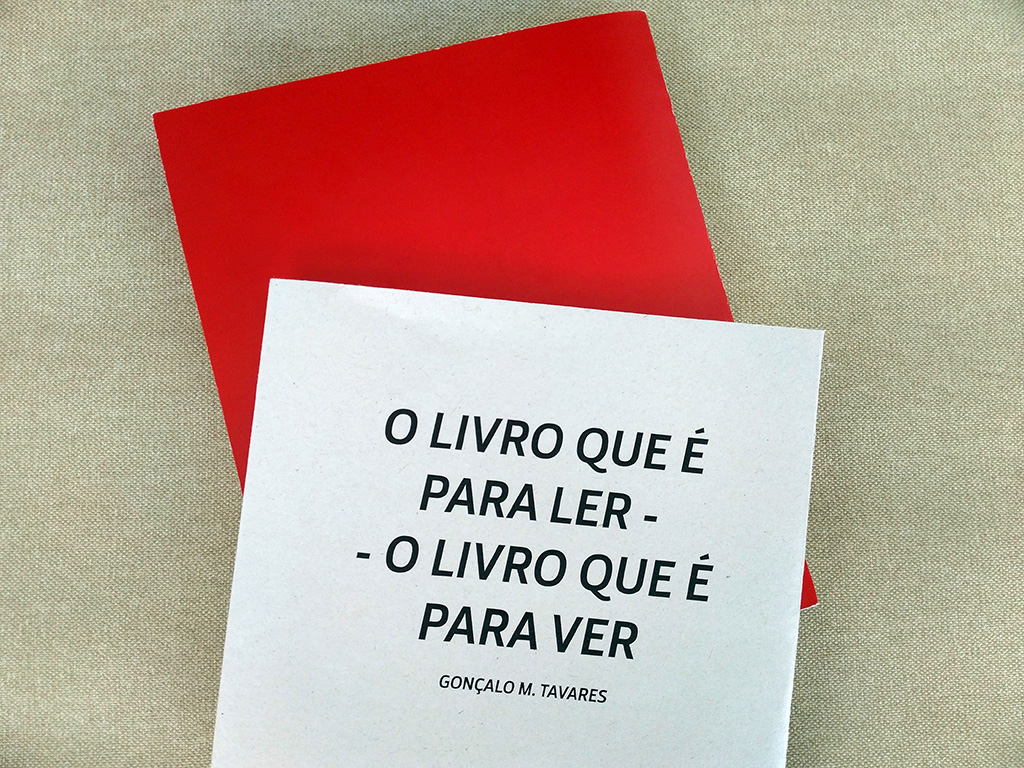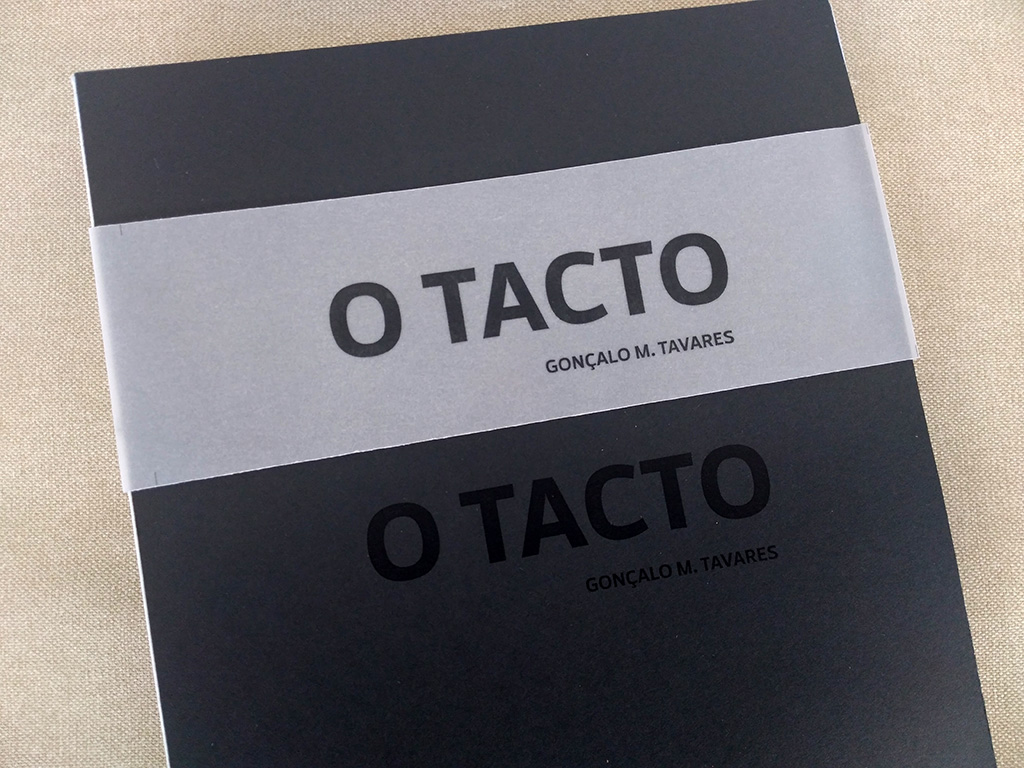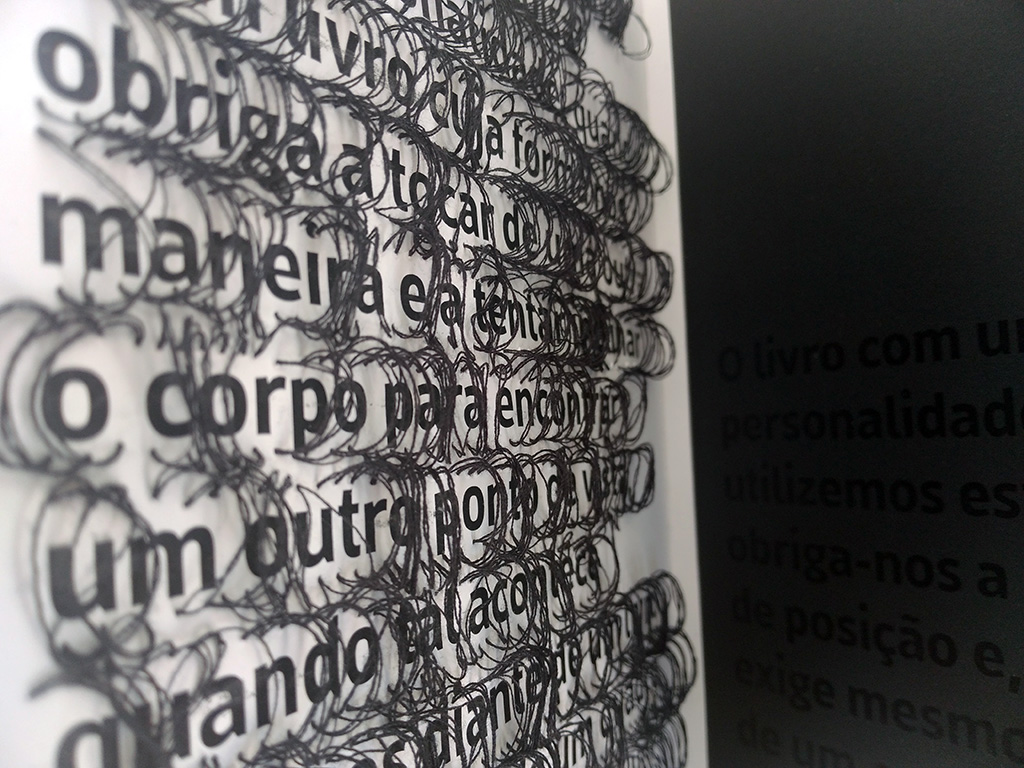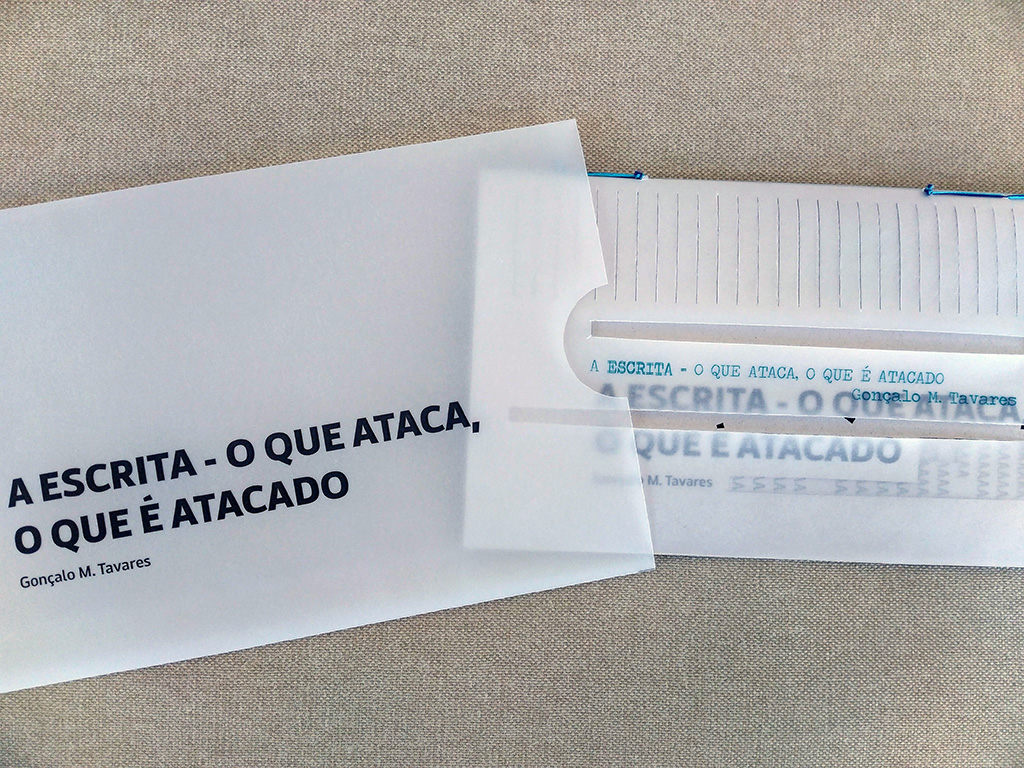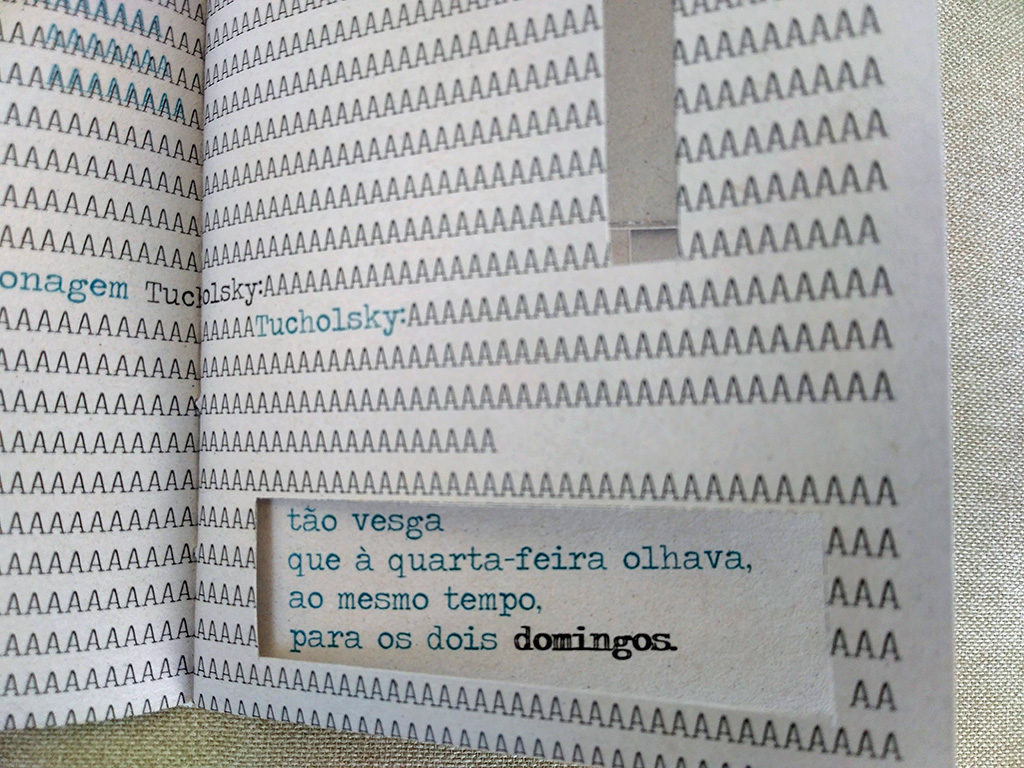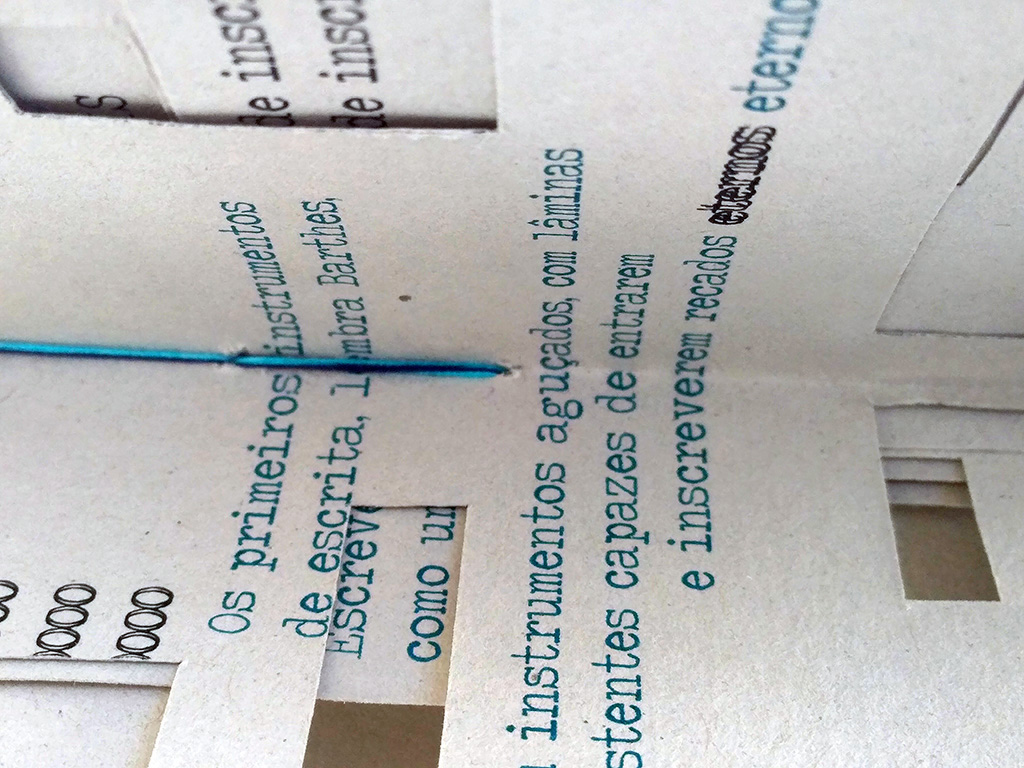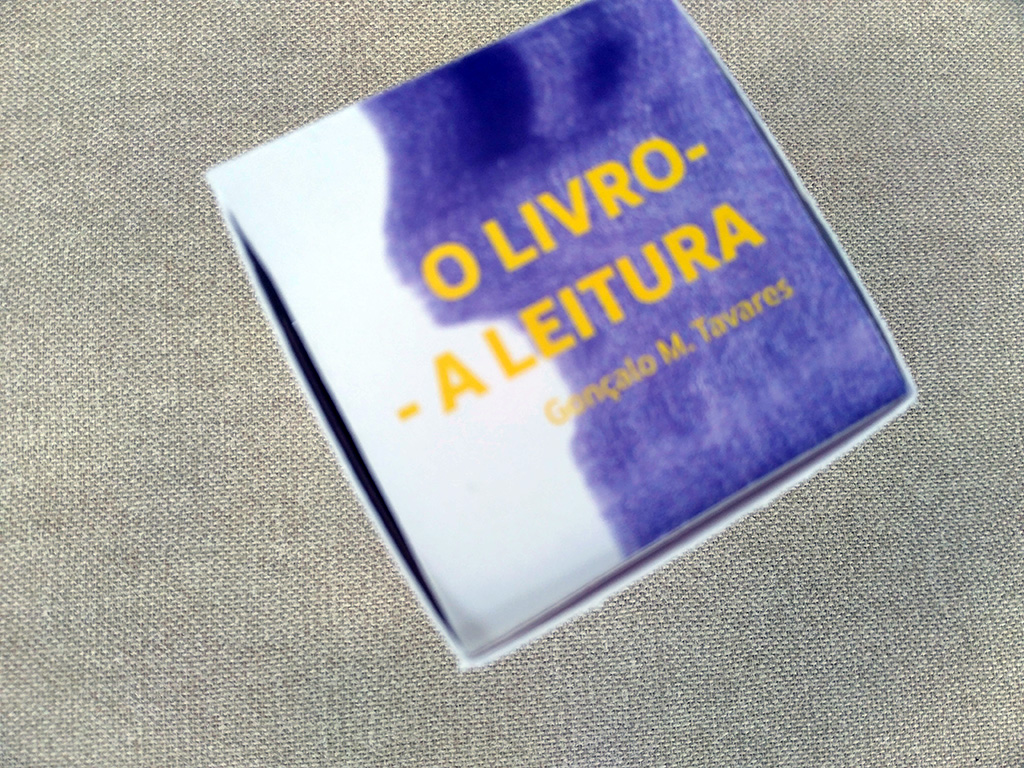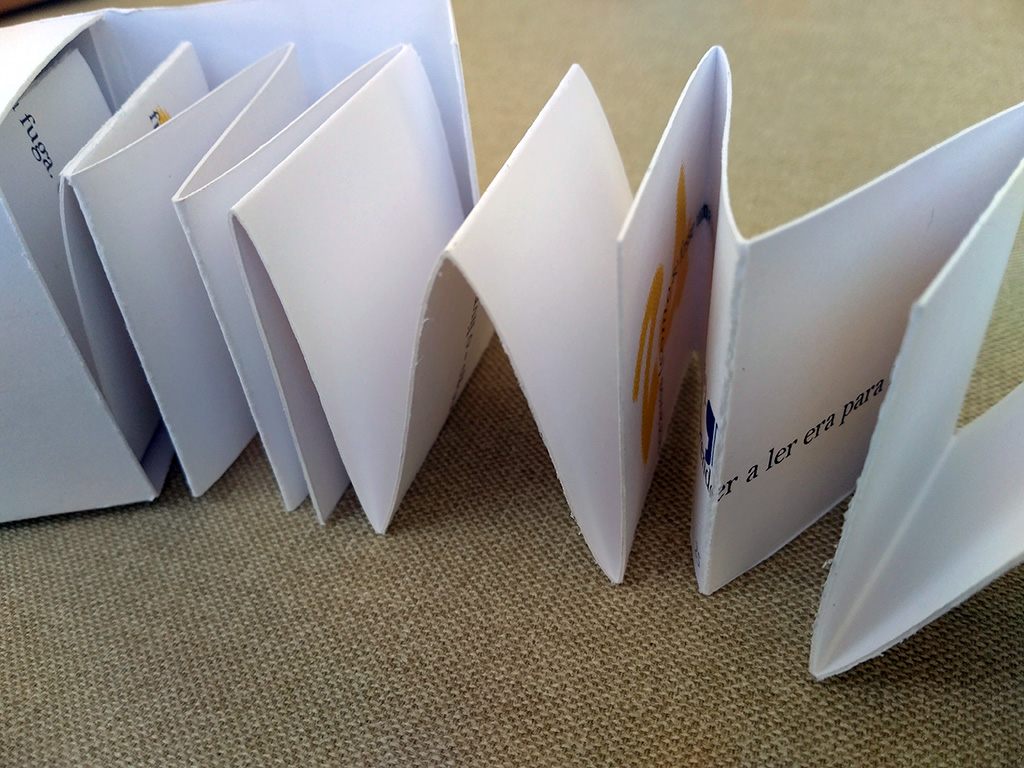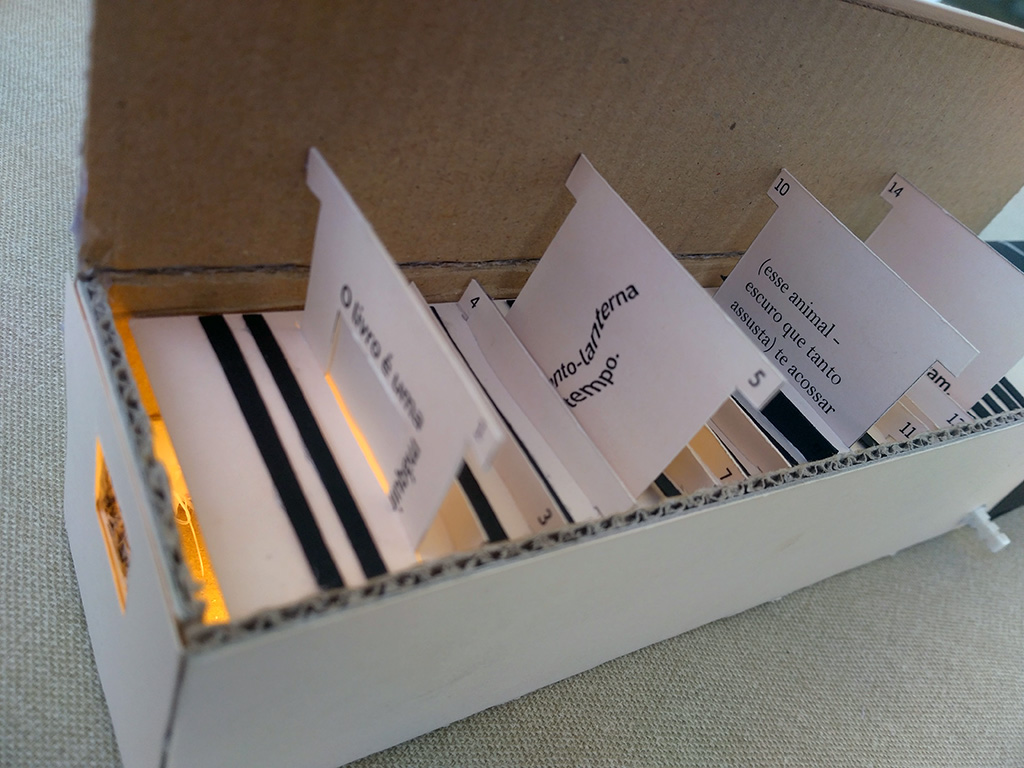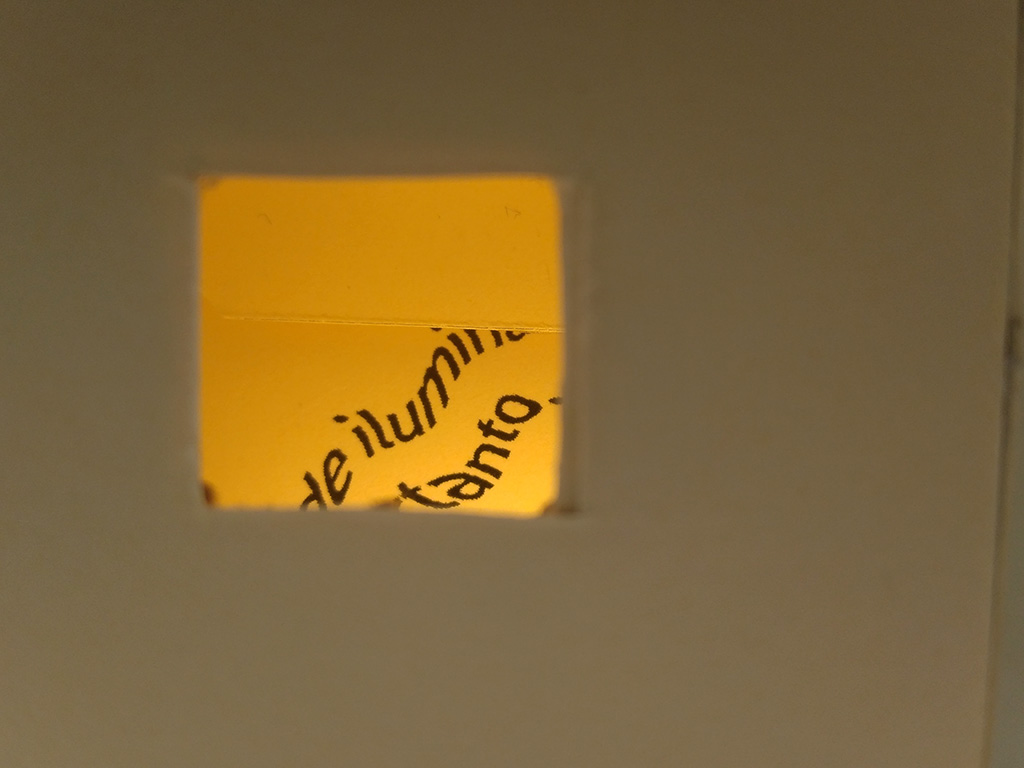The Book, a machine for thinking with
SYNOPSIS
In 2012, Gonçalo M. Tavares wrote – for the catalogue of the exhibition Tarefas infinitas: Quando a arte e o livro se ilimitam, which speaks to us about the book as a signifier of meaning – six short texts gathered under the title “Breves notas sobre o livro” [“Brief notes on the book”].
For that same catalogue, Gonçalo M. Tavares also wrote:
Opening a book is taking the risk of finding the infinite. Of having at your fingertips the page limits, the limitless. And how else could we find the infinite if not in the finite? Measurable, palpable, visible. In this open and white space of the page, in its folds, there can be no beginning, no end, no centre: the endless book. The freedom of reading, which is also disorienting: certainties and usual references are lost; paths and meanings split; the night surrounds us. A kind of blindness: the book opens up an essential obscurity, that of new beginnings. (2012)
Starting from the texts read, from the concepts discussed in the “Materialities of Literature II” seminar – especially from the text and works by Shelley Jackson – and from the reflections on the book contained in the aforementioned texts by Gonçalo M. Tavares, I propose a literary work, a book-object that enhances the materiality of the book. The book is read, seen, and it can be touched and felt. These complementary acts stem from the physical characteristics of the object, its materiality, and that is what the project is about: an enhancement of the materiality of the book. A book-object that is a book but simultaneously an artistic and aesthetic experience that questions the traditional conception of the printed book.
In Shelley Jackson’s text “I Hold It Toward You: A Show of Hands”, in which the author reflects on the nature of writing and the book, the first problem she poses is that of the definition of a book. What is a book? For Shelley Jackson, the book is a latency, it is something that is waiting to manifest itself and that manifestation happens at the moment it is read. Jackson develops a series of metaphors related to the hand and the way the hand connects itself to the book and writing, giving the idea that the whole body is involved in the act of reading.
In fact, as Gonçalo M. Tavares makes clear in “Brief notes on the book”, all the senses are involved in the act of reading. This is one of the main points that this project intends to highlight, that is, to reveal that a book was not only made to be seen but also touched, smelled and felt. The six texts by Gonçalo M. Tavares (“The Book – Reading”; “What is a Book?”; “Writing – What attacks what is attacked?”; “Touch”; “The Book to be read – The Book to be seen”; and “The Book and the objects – Speed, Slowness”) talk about writing and reading, about what it means to read, see or feel a book, about what the book is as an object, and about what it means to think through this object that is the book. With this in mind, I decided to work individually on each of the texts in order to foreground the meaning of each of them through a graphic, visual and expressive embodiment achieved both by placing the text on the page and through a mix of techniques and materials. Each of the six book-objects was placed inside a box with the title of what Gonçalo M. Tavares considers to be the definition of a book – “The Book, a machine for thinking with.”
Somehow, the project resembles an artist’s book due to the fact that the text is explored in different ways at the semantic and semiotic level. The meaning of the text is not only in the words, in the language, but also in the way it is paginated, bound and arranged in a spatial architecture. As with artist’s books, this project makes visible the existence of systems of graphic signification and it intends to test the boundaries that exist between the book and the work of art, investigating what can be considered a book-object while experimenting with the appearance and shape of such an object without abandoning its condition as a book. In fact, and once again similarly to what happens with artist’s books, my objective is to make it self-conscious of this condition.
As Johanna Drucker demonstrates in her book Diagrammatic Writing, there is a relational character of the components of a page of text and any text, however basic, always contains a system of graphic relations. This project is also consists of thinking about the book as a space of graphic articulations on which to intervene. A textual and artefactual space structures a set of interventions that it is possible to perform on it.
In the aforementioned text by Drucker, the author states that what determines the linearity or non-linearity of a text is the way in which the intervention is produced on the textual field and, therefore, it is possible to perform a continuous reading in a discontinuous text and a discontinuous reading in a continuous text. The codex is not a linear system and can be as complex as a digital interactive system. By the ways in which the texts were explored as a whole, they highlight these issues.
My proposal is a book-object. An experimental and analogue project. A box containing six texts about the book, a thinking machine that requires the use of the various senses and that we spend time seeing, reading, feeling and touching each of the materialized objects.
THEORETICAL AND ARTISTIC SOURCES
DRUCKER, Johanna (2013). Diagrammatic Writing. Banff Art Centre, February 12-18, 2013. CreateSpace Independent Publishing Platform. http://will-luers.com/DTC/dtc354/diagrammatic_writing.pdf.
JACKSON, Shelley (2017). “I Hold It Toward You: A Show of Hands”. The Bloomsbury Handbook of Electronic Literature. London: Bloomsbury. 13-38.
PIRES DO VALE, Paulo (2012). Tarefas infinitas: Quando a arte e o livro se ilimitam. Lisboa: Museu Calouste Gulbenkian.
SOFTWARE USED
- InDesign, Illustrator, Photoshop.
MATERIALS USED
- Various papers, transparencies, cardboards, threads, glues and staples left over from previous works.
- A recycled box from a post-office package that has been turned inside out and painted so that its written information is not visible.
- An on/off switch (recycled from an old television).
- A battery.
- A sticker of microLEDs (left over from a previous project).
- Cables used to connect battery, LEDs and switch (recycled from an old television).
- Cut-out self-adhesive vinyl (the only material that had to be purchased).
[Translation: MP, 2021]

